| Botanical Name |
|
| Family |
Rutaceae - The rue, buchu & citrus family. |
| Pronunciation |
kleer-uh-DEN-drum GLAB-rum |
| Common Name(s) |
Afrikaans: Tontelhout; Stinkboom; Bitterblaar
IsiXhosa: uluvethe; umqwaqwanam
Tshivenda: Munukha-tshilongwe
|
| Plant Group |
- Tree A woody, self-supporting perennial plant usually with a single main stem and generally growing more than 6 meters tall.
|
| Plant Size |
- Small
| Tree | 4m to 8m |
| Shrub | 50cm to 75cm |
| Perennial/ground cover | 10cm to 20cm |
| Bulb | 20cm to 30cm |
| Succulent | 10cm to 20cm |
|
| Position |
- Canopy Shade Canopy shade is found below closely grown trees where some light filters through. Ideal for the protection of herbaceous plants.
- Light or Dappled Shade Found below trees with sparse, open foliage. Ideal for the protection of herbaceous plants.
- Partial Shade The area is in shade for part of the day and in full sun for part of the day.
- Sun The area is in full sun for all or most of the day, all year round.
|
| General Information |
- Attractive fruits, berries or seeds Brightly coloured fruits or berries increase and extend the visual impact of the plant and are especially attractive to birds and other small wildlife.
- Deciduous to Semi-deciduous In warmer areas a deciduous plant may not lose its leaves during winter at all, or may lose its leaves for a very brief period, or may only lose part of its foliage.
- Drought Tolerance: High The plant is well adapted to arid conditions; it can survive long periods of drought and high temperatures without extra water.
- Fragrant / Aromatic These plants posses a strong, usually pleasant odour.
- Frost: Half-hardy The plant is able to survive low temperatures and some frost but requires protection against severe frost.
- Water Wise Plant species originating from low rainfall regions that require less water to survive and thrive than other plant species.
- Wind Tolerant Plants able to withstand the effect of strong winds.
|
| Specific Information |
Clerodendrum glabrum is a samll to medium sized tree with a rounded to drooping crown. This subject can also be cut back to form a large shrub. The leaves sometimes have a pungent foetid odour when crushed and flowers may be sweetly or unpleasantly scented.
The seeds are much loved by birds - in fact it is a race between the birds and myself to get to the seeds before they ripen fully, with the birds invariably on the winning side!
|
| Ad Break |
|
| Flowers |
| Description |
rounded heads of small tubular, five-petaled flowers
|
| Season |
- Summer to Autumn Plants will seldom bloom for the entire season as given in the list, but should flower during a period within these parameters.
|
| Colour |
|
| Growth Rate |
- Fast Specifying growth rate can be very misleading as there is considerable variation of growth rate depending on type and species of plant, available water, supplementary feeding, mulching and general care, as well as the plants suitability and adaptability to the garden environment.
|
| Plant Uses |
- Attracts bees, butterflies or other insects This plant attracts insects which can be food for birds or other creatures in your garden.
- Attracts Birds This plant will attract birds.
- Boundary A plant useful for planting around the edges of the property to form a green or colourful backdrop, an impenetrable hedge, to hide walls or create privacy.
- Filler Either a fast growing tree or shrub used temporarily to fill in an area while the permanent plants grow to a desired size, or a plant used to fill gaps in borders or beds.
- Pioneer for new gardens A very fast growing plant, able to withstand hardship, that can be used to populate land that has recently been cleared of natural vegetation. These plants pave the way for slower-growing species by adding nutrients to the soil and creating leaf litter.
- Provides light / dappled shade A tree with an open to sparse canopy, through which varying degrees of sunlight can penetrate.
- Suitable for bonsai A shrub or tree that lends itself to being dwarfed.
- Suitable for coastal gardens Plants adapted to dry, sandy soil, forceful wind, limited rainfall and intense sunlight.
- Suitable for smaller gardens Such plants do not have invasive root systems, remain small or controllable and can often be grown in containers.
- Wild Garden An indigenous garden planted for the benefit of wildlife and birds. Provides food, water, a variety of mini-biomes and no poisonous chemicals are used.
|
| Distribution and Habitat |
from just north of Port Elizabeth in the Eastern Cape to Kwazulu-Natal, Mpumalanga, and Limpopo, as wel as in Kenya, Tanzania, Zanzibar, Botswana, Malawi, Mozambique, Zambia and Zimbabwe, in and along the edges of evergreen forests and woodlands, and along the banks of streams and rivers
|
| Planting Suggestions |
|
| Medicinal Uses |
Previously used as tinder-wood to start fires. The leaves are reportedly used medicinally for a number of ailments but I have not yet been able to establish what these are. Can you help?
Many thanks to Shadrack for his help - see comment below
|
| Ad Break |
|


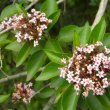
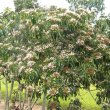
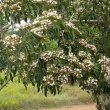
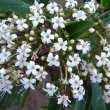
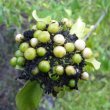
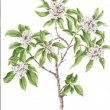


Comments
Tinderwood
Would Clerodendrum Glabrum do well in Gauteng? Pretoria specifically?
Tinderwood suitability for Pretoria
This would depend on the amount of frost you get. Tinderwood is tender to frost, meaning that it will not survive any frost or cold winter winds. It could be kept in a large container, provided it is given protection in winter, perhaps on a patio or with a hessian cover.
uses for Clerodendrum glabrum var
Clerodendrum glabrum var. glabrum (White Cat's Whiskers common names :uMqoqonga (zulu) uluvethe, umqwaqwanam (Xhosa) umphehlacwatsi , umphelacwatsi (swati), )uses are Scattered for ancestors. A rain tree. Leaves for colic, coughs, colds, anal prolapse & wounds. Roots for snakebites. Bark as a dewormer.
Medicinal uses of Clerodendrum glabrum
Many thanks for your input Shadrack. Much appreciated.
Discuss this plant
Share knowledge, ask a question or give an experience.